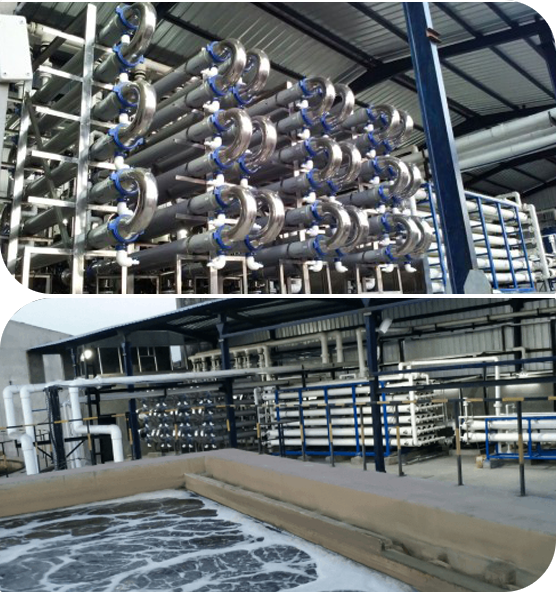
Waterman Engineers Australia is among the foremost manufacturers of Zero Liquid Discharge method. A ZLD procedure is really a remedy approach and that is applied to get rid of the many liquid squander from a system. The goal of ZLD h2o procedure is to lessen wastewater economically and develop potable drinking water which is suit for regular use. Zero discharge system is a complicated treatment method approach that comprises ultrafiltration, reverse osmosis, evaporation and fractional electro deionization. And we are a very well-acknowledged supplier of ZLD systems.
In many Industries, like power, oil & gasoline, chemical compounds, mining and Some others, a large amount of wastewater is generated that needs to be managed. Conventionally, this discharge of wastewater is done by using a plant outfall into a area water system like an evaporation pond, or in some instances deep perfectly injected. These procedures lead to a lot of environmental fears by the public in lots of locations of the entire world, as drinking water is a scarce supply and its administration need to be monitored. These considerations have resulted from the institution of ZLD processes by several industries to minimize their environmental footprint and greatly enhance sustainability. And, Waterman Engineers Australia are very best ZLD suppliers yow will discover for This method.
Qualities OF ZERO LIQUID DISCHARGE Program
The Houses of the Zero Liquid Discharge procedure can vary depending upon the particular design and style and know-how made use of. However, some typical Qualities of ZLD methods contain:
Water Conservation: Among the main goals of ZLD methods would be to preserve h2o by minimizing the discharge of liquid waste into the environment.
Superior H2o Purity: ZLD programs are intended to generate higher-quality h2o that is certainly cost-free from impurities and contaminants, which makes them well suited for use in lots of industrial processes.
Versatility: ZLD methods are often intended to accommodate a wide array of enter liquid streams, which makes them versatile and suited to use in different industries.
Highly developed Wastewater Treatment method: Zero liquid discharge methods use Highly developed wastewater remedy strategies to get rid of impurities and contaminants within the effluent, making high-good quality h2o.
Waste Reduction: ZLD programs assistance minimize squander by reducing the volume of liquid waste that should be disposed of and by producing a concentrated, sound squander product that can be securely disposed of.
Electricity Performance: ZLD methods might be Electricity-intense due to the large Strength prerequisites of evaporation as well as other wastewater remedy processes. Even so, advancements in technological know-how are making Zero liquid discharge systems much more Power-effective and Zld System Manufacturer Zero Liquid Discharge System cost-efficient.
Waterman Engineers Australia manufactures Zero Liquid Discharge (ZLD) methods made to eliminate all liquid waste, aiming to supply potable drinking water and lessen environmental affect. Their ZLD programs ordinarily include things like ultrafiltration, reverse osmosis, evaporation, and fractional electro deionization. Critical technologies applied are Falling Film Brine Concentrators, Pressured Circulation Crystallizer, and Some others, by using a two-action technique of pre-focus and evaporation/crystallization to Get well and reuse water. These systems are adaptable to different industries, emphasizing drinking water conservation, large h2o purity, squander reduction, and Vitality performance. Complex specifications are various and customizable, looking at variables like water resource, circulation rate, and feed water excellent.
The necessity for Zero Liquid Discharge (ZLD) techniques occurs through the requirement to deal with environmental issues relevant to h2o scarcity and pollution. In industries like electric power, oil & gas, and mining, large amounts of wastewater are produced. Customarily, this wastewater is discharged into bodies of h2o, leading to pollution and depleting clear drinking water assets. ZLD systems aim to reduce these impacts by dealing with and recycling wastewater within the industrial approach, therefore conserving h2o, lessening waste, and marketing sustainability.
When considering the technological requirements of a Zero Liquid Discharge (ZLD) method, crucial factors to deal with include the h2o supply it's going to deal with, the system's movement charge, the quality of feed drinking water, the phases of remedy concerned, the Restoration price of water, methods for focus disposal, resources of construction, operating conditions, and technique automation and control. These aspects ensure the process's effectiveness, sturdiness, and effectiveness in treating and recycling industrial wastewater.
Zero Liquid Discharge (ZLD) crops present Positive aspects including water conservation, waste reduction, and pollution prevention, contributing to environmental sustainability. They're relevant in industries like power technology, oil and gasoline, chemical substances, and mining, exactly where they help in handling industrial wastewater successfully, cutting down the ecological footprint, and complying with stringent environmental regulations. These devices are essential in spots going through h2o scarcity and for industries aiming to enhance their sustainability and operational performance.
FAQs to get a Zero Liquid Discharge (ZLD) process frequently tackle its operational principles, cost-performance, servicing demands, environmental impact, applicability throughout different industries, and regulatory compliance. These concerns help end users fully grasp the process's Added benefits, technical requires, and suitability for his or her particular wastewater administration requirements.
1. Zero Liquid Discharge (ZLD) can be a wastewater procedure process created to eradicate all liquid squander.
2. The procedure's components are influenced by the specific industrial procedure, wastewater composition, and regulatory demands.
3. Effluent treatment method crops get rid of pollutants from textile effluents to stop environmental contamination.
4. Advantages contain drinking water conservation, pollution reduction, and regulatory compliance.
5. The goal is to attenuate environmental impression by recycling drinking water and lowering waste.
six-nine. Effluent cure crops are levels in wastewater treatment method: Key (Actual physical separation), secondary (biological therapy), and tertiary (Sophisticated therapy).
10. Device operations consist of filtration, sedimentation, Organic treatment method, and disinfection.
11. Restricting parameters are components that have an impact on the cure's performance, like pH and contaminant concentration.
twelve. Layout factors contain flow level, effluent composition, and ideal high-quality of taken care of h2o.